Gender diversity on boards of Latin American companies remains low, and despite some progress across the six main Latin American markets covered by ISS (Argentina, Brazil, Chile, Colombia, Mexico, and Peru), change has been slow. According to ISS data for 2024, board gender diversity varies from between 12.6 percent in Mexico to 24.9 percent in Colombia, with the latter remaining the Latin America country (among the ones covered by ISS) with the highest proportion of female directors. Brazil, the largest market in the region, has a modest average board gender diversity of 16.1 percent.
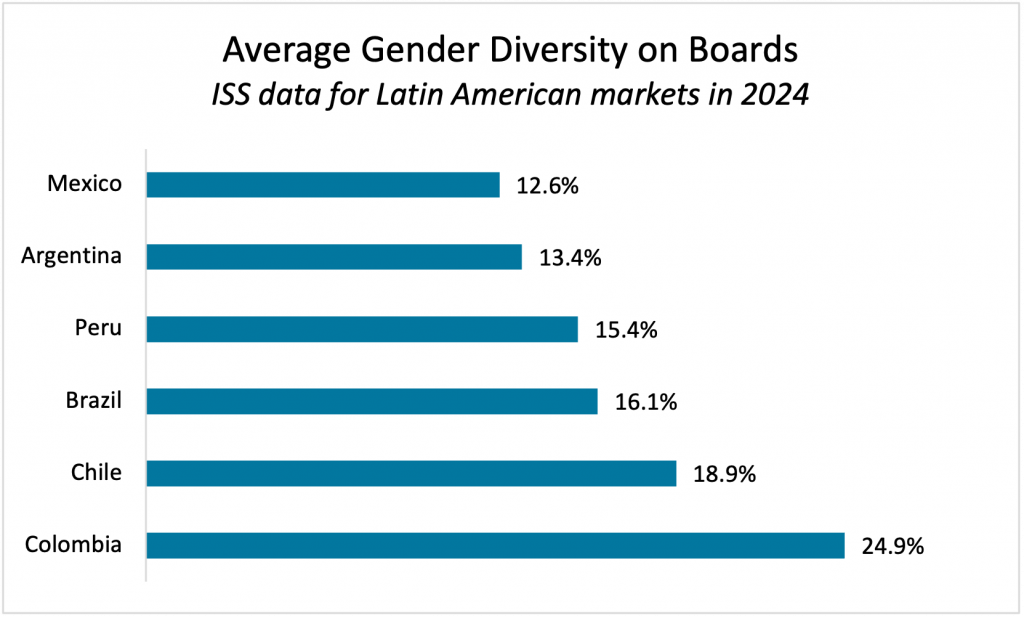
Source: ISS Governance Research & Voting
Data for the 2020-2024 period illustrate incremental increase in female board representation in all Latin America markets covered by ISS; however, progress has been gradual, as indicated in the graph below.
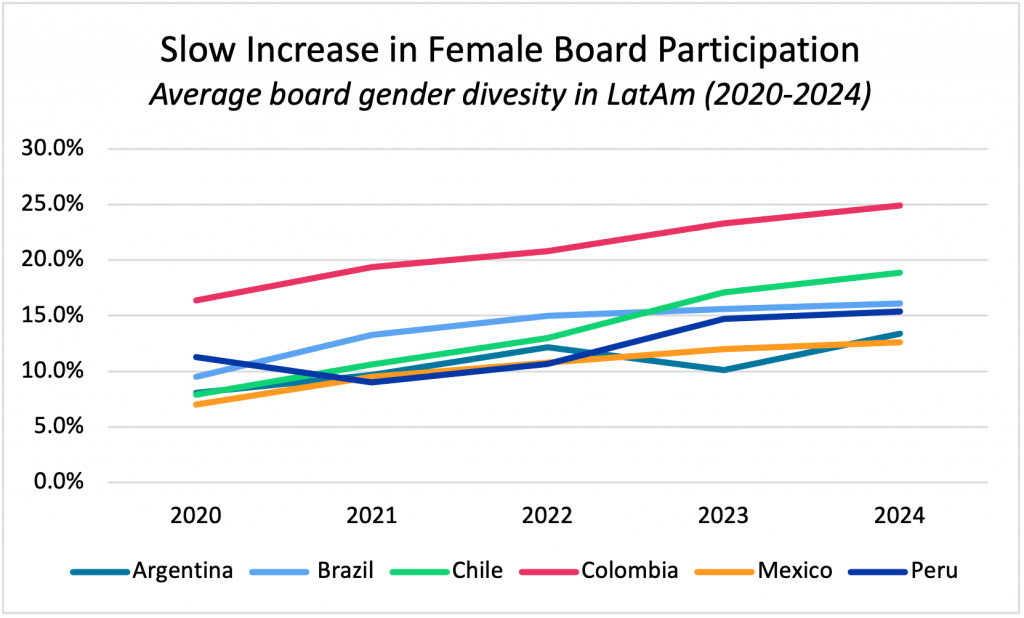
Source: ISS Governance Research & Voting
When looking at each country separately, despite the low overall board gender diversity, the granular data shows upward trends in the percentage of female directors across all six markets since 2020 (see graphs below):
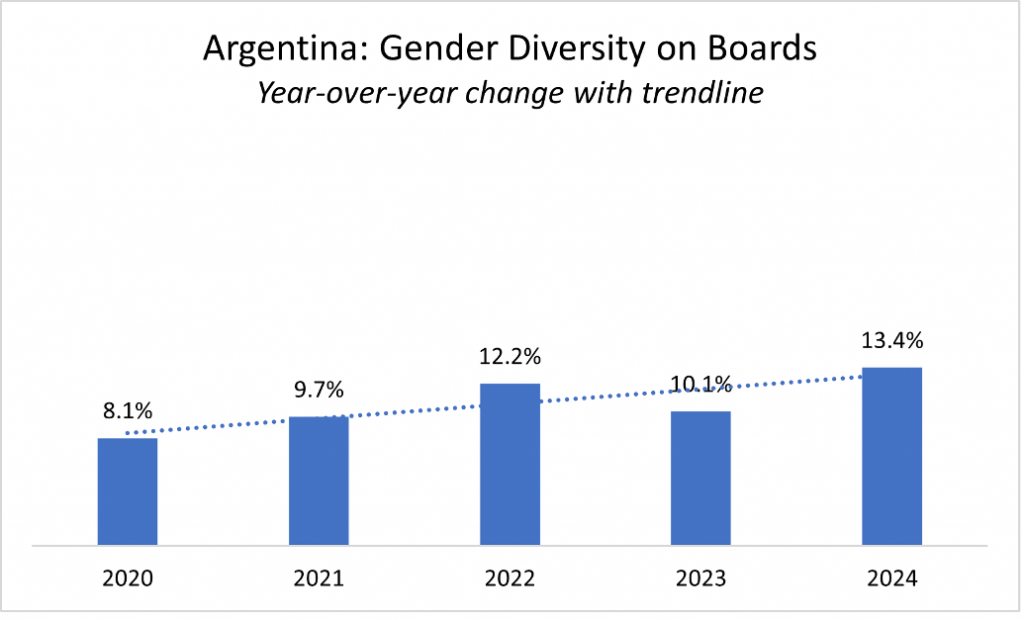
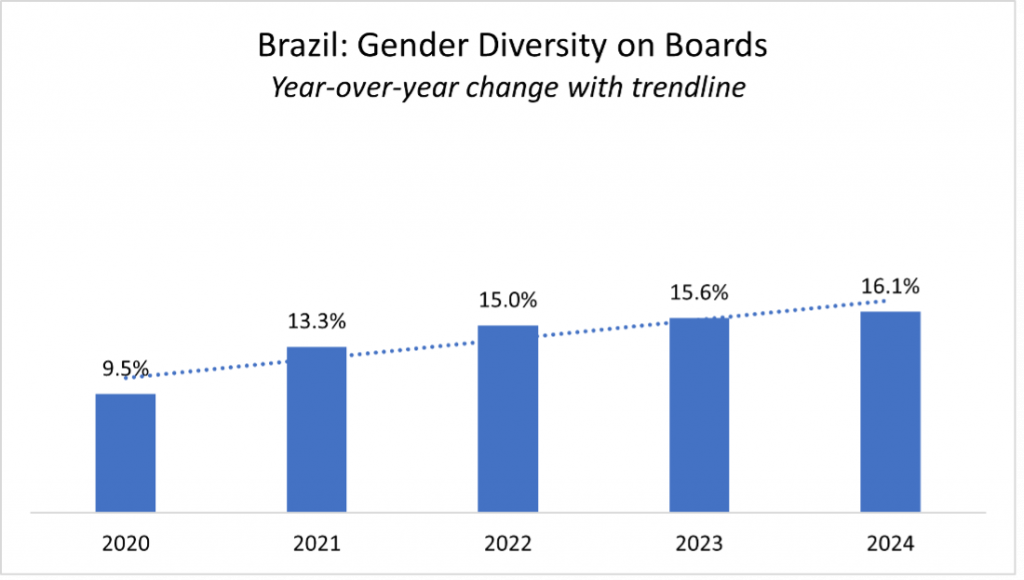
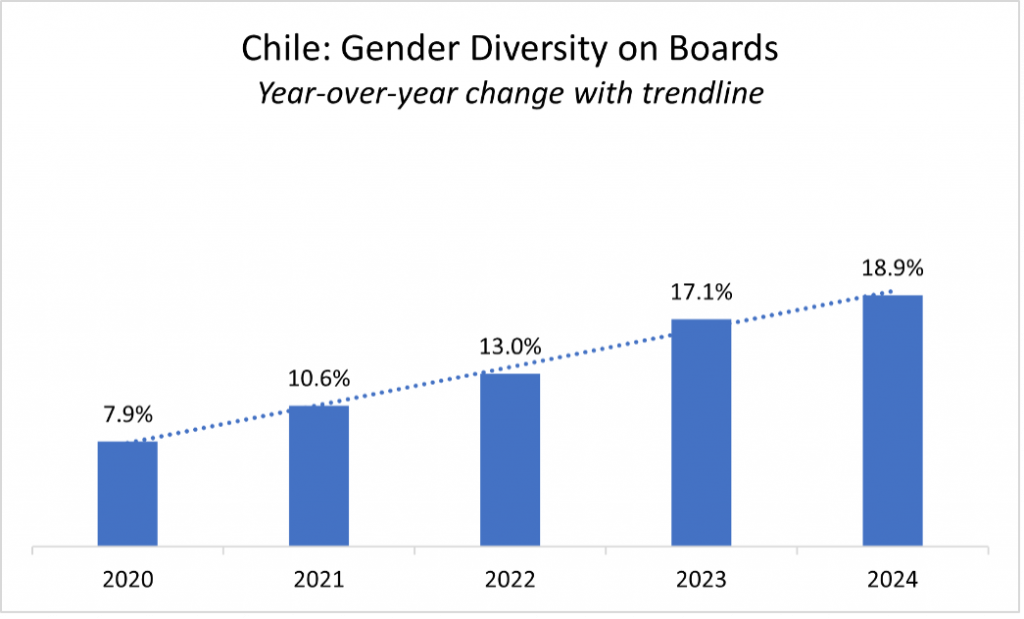
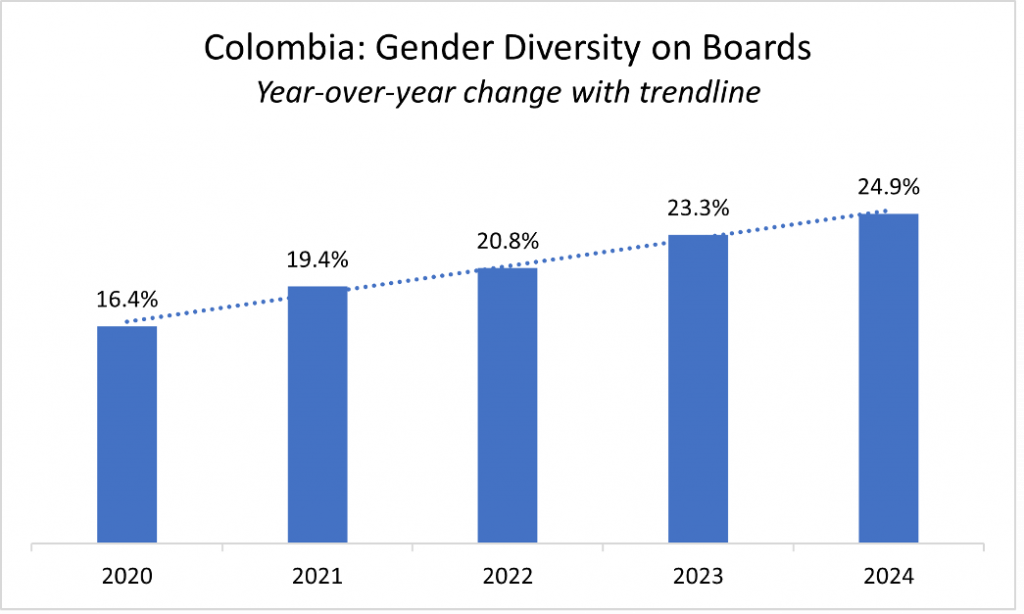
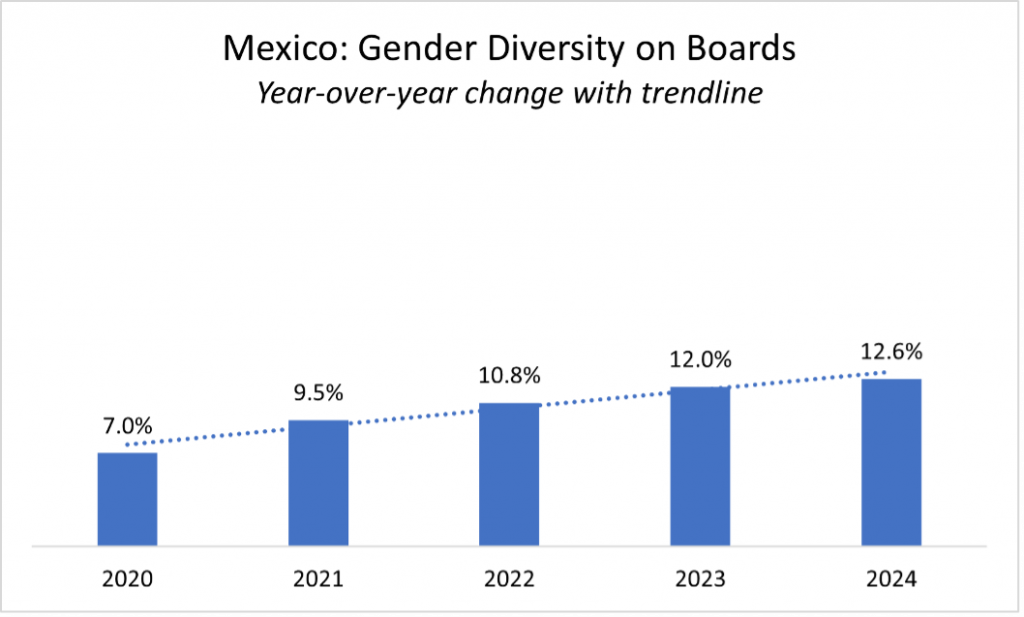
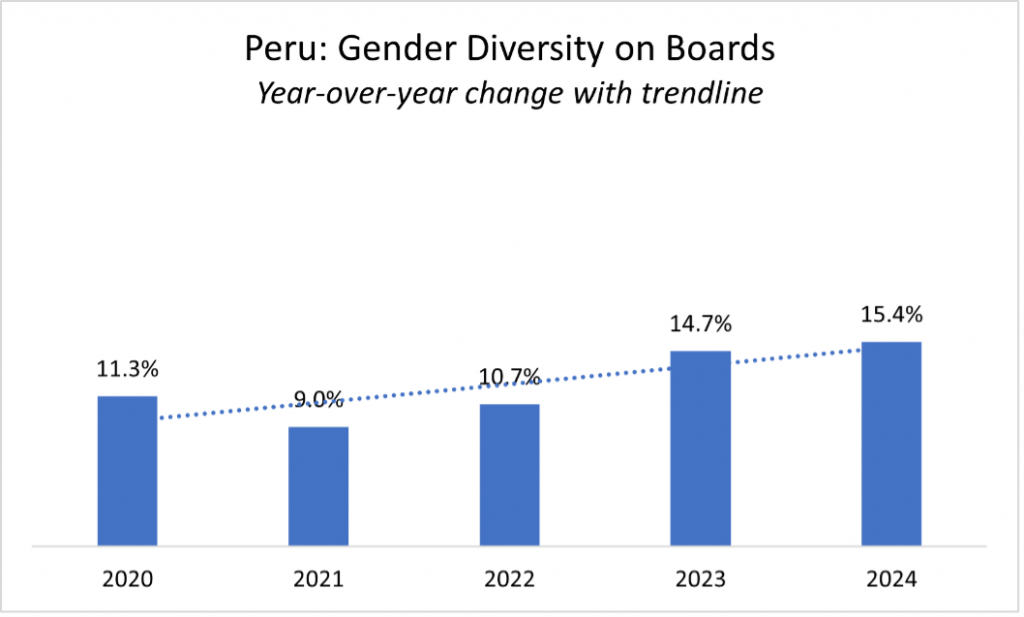
Source: ISS Governance Research & Voting
Proportion of Women Serving as Chair Lags Behind Overall Board Gender Diversity
Female participation in leadership positions within the region’s boards is notably low. Specifically, out of the 486 publicly-traded Latin American companies reviewed for this paper, only 24 companies had a woman serving as chair in 2024.
Notably, no companies covered by ISS in Argentina or Peru had female chairs, as of the most recent proxy season in 2024. Although the four other Latin American markets had women serving as chairs, their representation remains in single digits across all these countries.
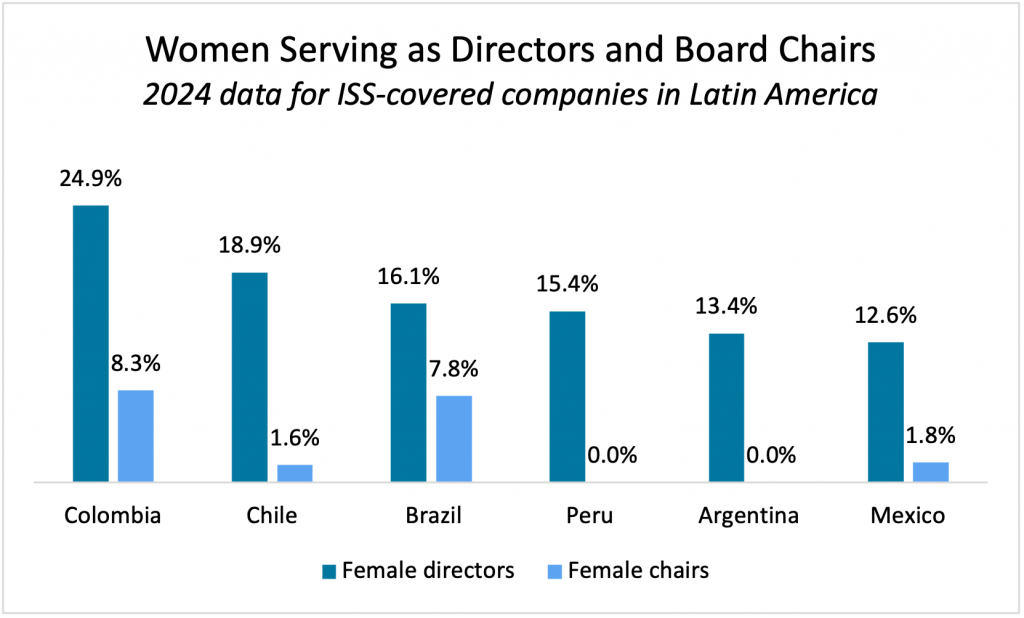
Source: ISS Governance Research & Voting
All-Male Boards Persist in Latin America
Although there has been a reduction in all-male boards since 2020, the pace of change varies significantly among countries. Chile has seen the most substantial decrease of all-male boards, dropping from 51.5 percent in 2020 to 15.4 percent in 2024. In contrast, Peru’s reduction has been more modest, going from 38.5 percent to 31.8 percent in the same period. Consistent with general board diversity trends in the region, Colombia is the Latin American country with the smaller number of companies covered by ISS that still present their shareholders with all-male boards.
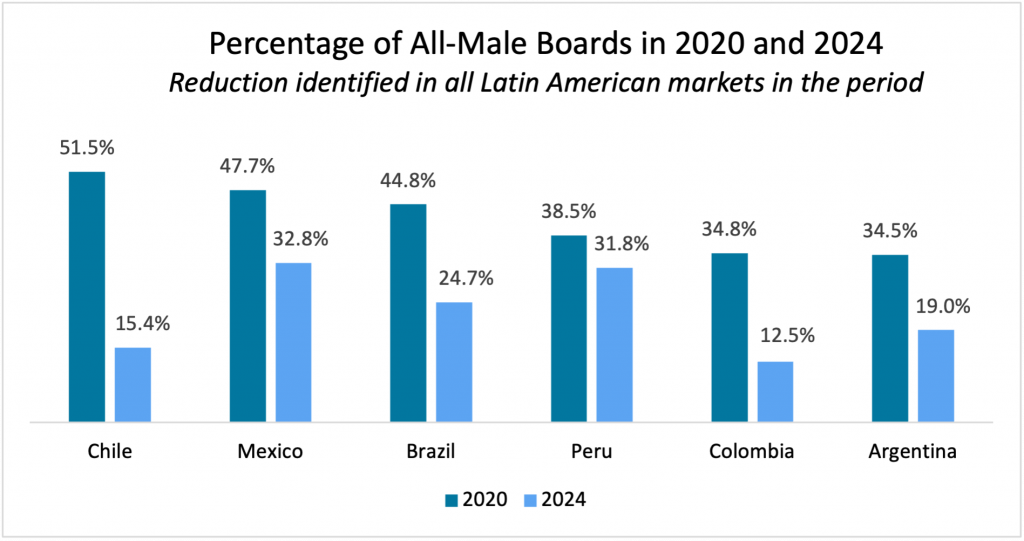
Source: ISS Governance Research & Voting
The gradual decline in all-male boards is also evident in the aggregate number of ISS-covered companies in the region with this structure, which shows a slow but steady decrease year-over-year since 2020.

Source: ISS Governance Research & Voting
Gender Diversity: A Closer Look
The low board gender diversity is compounded by the fact that a significant portion of the boards with female representation have only one woman serving as director (35 percent), as shown in the chart below:
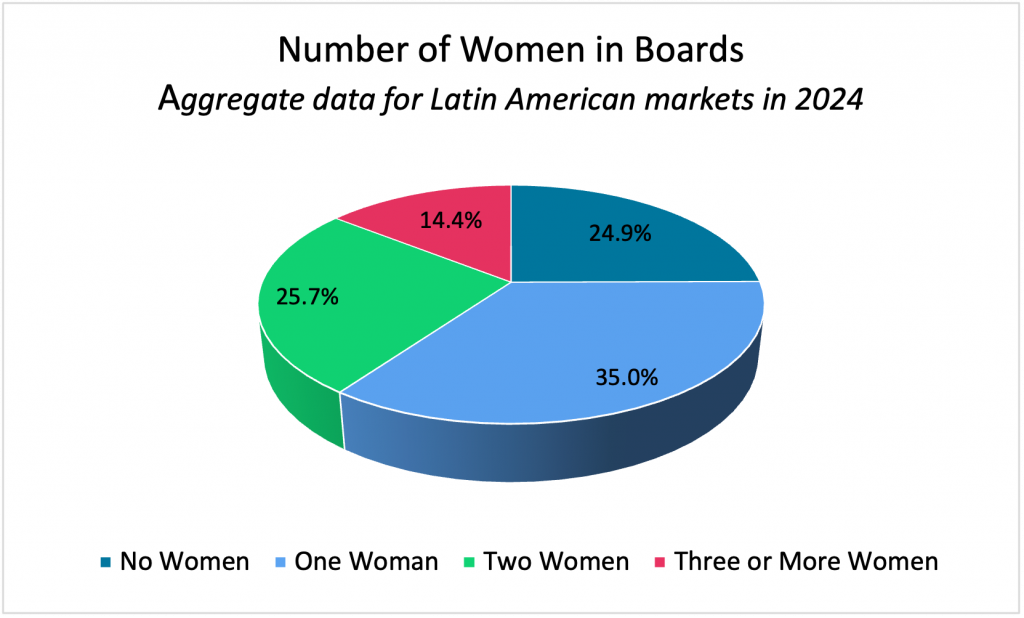
Source: ISS Governance Research & Voting
Nevertheless, the situation is not homogenous in the region. Country-specific data reveals that Argentina has the highest proportion of boards with only one female director (57.1 percent), followed by Brazil (40.5 percent).
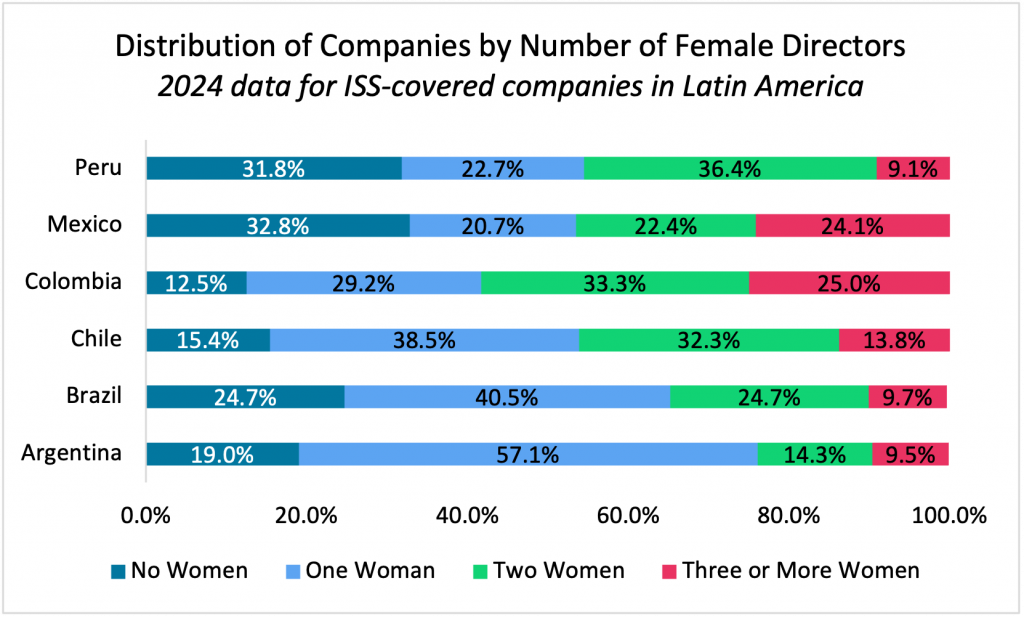
Source: ISS Governance Research & Voting
Regulatory Developments
From the main markets covered by ISS in the Latin America region, four of them – Argentina, Brazil, Colombia, and Mexico – have some relevant soft or hard law regulation on board gender diversity.
Colombia enacted a 2023-law mandating a minimum of 30 percent female participation on boards by 2026, which applies exclusively to companies in which the Colombian State holds a majority stake.
In Brazil, the Sao Paulo Stock Exchange (B3) issued a comply-or-explain regulation seeking to increase diversity in senior leadership roles. The soft law regulation, to be phased-in in January 2025 and expected to be fully implemented by 2026, recommends the inclusion of at least one woman and one member of an underrepresented group (racial diversity, members of LGBTQ community, people with disabilities) serving as a board director or as a statutory executive.
In Argentina, the two voluntary listing segments with higher governance standards launched by the stock exchange in 2018 require boards to include members of both genders. Five of the 21 Argentinean companies covered by ISS are listed under these segments and are, therefore, mandated to have at least one female director.
Lastly, in 2018, Mexico amended its code of best corporate governance practices, to incorporate a comply-or-explain recommendation that boards include female directors, without specifying a quota.
It should also be noted that, since 2021, ISS voting guidelines for the Latin America region (Brazil Voting Policy and Americas Regional Voting Policy) recommend that at least one female director should serve on the board of publicly-traded companies.
While gender diversity on Latin American boards has seen gradual improvement, the rate of progress remains slow and far behind more developed markets. In the U.S., for example, only 1.7 percent (52 issuers) of the Russell 3000 companies had all-male boards in 2024, based on ISS data, compared to a current aggregate figure of 24.9 percent of all-male boards among the companies covered by ISS in Latin America.
Conclusion
ISS data shows that three-quarters of the companies covered in the region have some level of board gender diversity, with all six main markets showing an upward trend of gradual increase of female board representation between 2020 and 2024. Female directors, however, are still rare in leadership roles, with only 24 women serving as chair among the 486 Latin American companies analyzed for this paper.
A mix of hard and soft laws have been adopted in the region to boost board diversity, including the 30-percent female quota for state-owned companies in Colombia and the recent regulation adopted by Brazil’s stock exchange, expanding the diversity focus to include race, disability, and the LGBTQ community, moving beyond female representation. In addition to the expectation of increased diversity, the adoption of a comply-or-explain soft law in the region’s largest market will also likely bring more transparency on the reasons given by Brazilian companies for lacking diverse directors and executives.
While the pace of change remains slow, the increase in female board participation, along with recent regulatory changes, signal a positive trend in the governance landscape in the region. Observing these developments over time will help investors understand how diversity will shape the future of corporate leadership in the region.
(Read more about the profile of female directors in the Latin America region in the ISS paper Female Directors in Latin America: More Likely to be Independent, Younger, and Lower Tenured.)
By: Ana Luiza Farias, John Reidy




